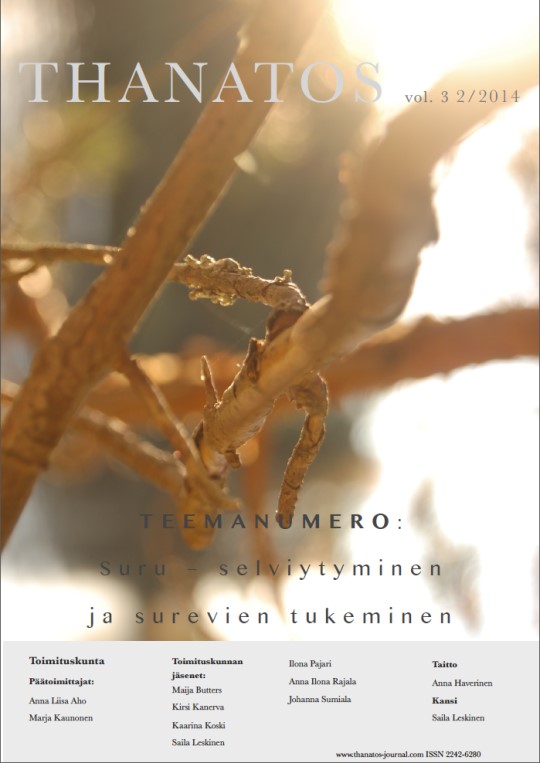Memorial video tribute and the enfranchised grief of a gay widower
Abstrakti
Doka (2008) introduced the term ‘disenfranchised grief ’ to refer to the form of grief that lacks social recognition. This paper argues that disenfranchised grief can find recognition and support via online communities, and it introduces this as enfranchised grief. Media and communication technologies have been widely used to communicate death and dying, while a vast number of the population, globally, has access to the information. Numerous deaths of celebrities have been covered by the news and Internet sources with a global effect, as those have also initiated mass feelings of grief and remembrance (i.e. Princess Diana). Video platforms online have been widely used to upload and share memorial video tributes of loved ones. Yet it is important to remember that the video sharing online has multiple roles to play, besides the commemoration of the deceased. This article will focus on YouTube memorial video tributes, but not in large. It explores gay widowers and the sense of belonging that the bereaved gain from memorial videos. Gay widowers may adapt to the same social role as their counterparts, straight widowers, but with higher challenges. Using the case study of Bridegroom YouTube video, this article will expand on how YouTube memorial video tributes may serve as the mean for a sense of belonging and acceptance of the role of the griever. With this exemplar, the form of enfranchised grief in the online communities is suggested. This article draws from a content analysis of a ten-minute long YouTube video and concludes to the communal character of YouTube commemoration.
Tiedostolataukset
Julkaistu
Numero
Osasto
Lisenssi
Copyright (c) 2023 Panagiotis Pentaris

Tämä työ on lisensoitu Creative Commons Nimeä-EiKaupallinen-EiMuutoksia 4.0 Kansainvälinen Julkinen -lisenssillä.





